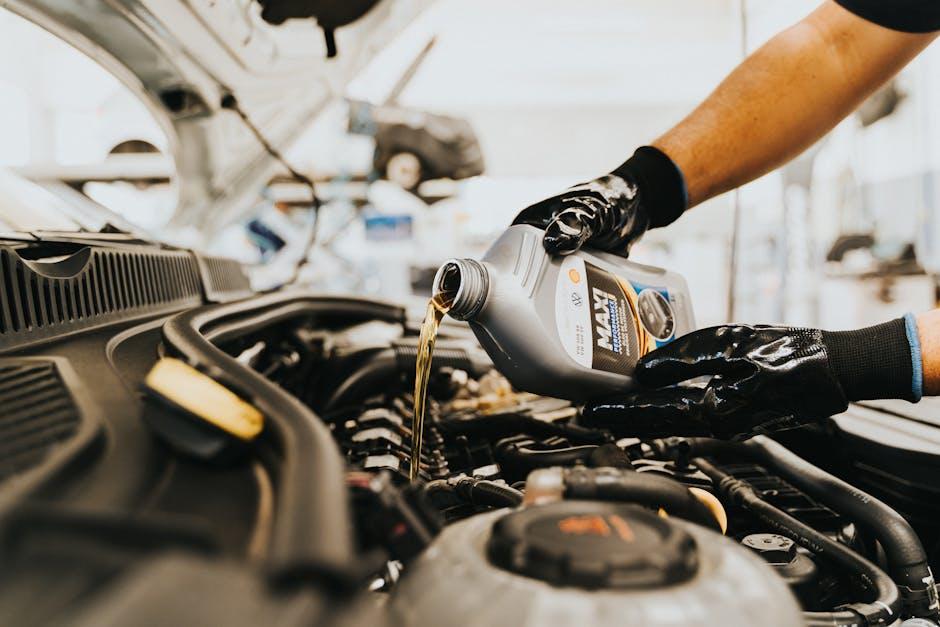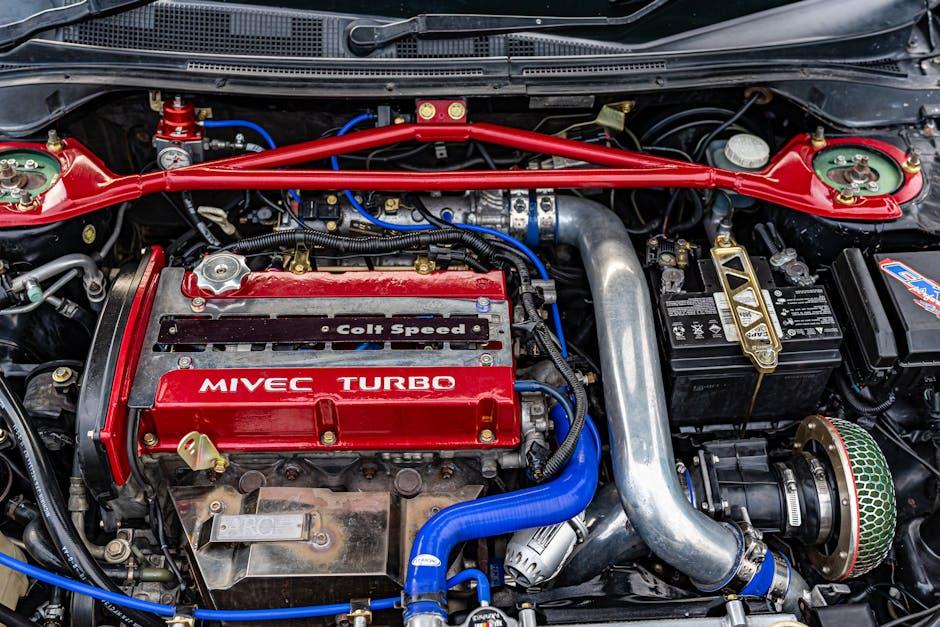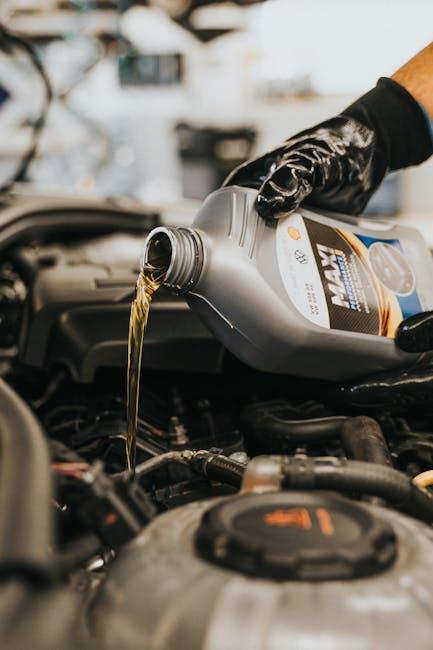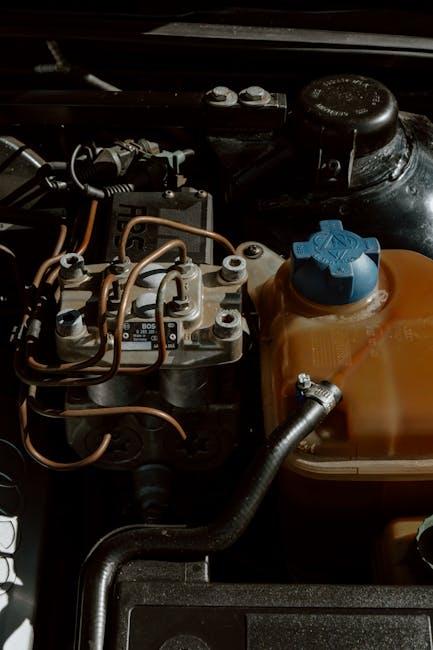Beneath the sleek exteriors and roar of engines lies a world of vital liquids, quietly working to keep your car running smoothly. From the invisible flow of engine oil to the clarity of windshield washer fluid, these common car fluids are the unsung heroes of every journey. Knowing when to check and replenish them is not just a routine—it’s the key to avoiding unexpected breakdowns and extending the life of your vehicle. In this article, we’ll explore the essential fluids that power your car and guide you on the best times to give them a careful look, ensuring your ride stays safe, efficient, and ready for the road ahead.
Table of Contents
- Essential Car Fluids Every Driver Should Know
- Understanding the Role of Engine Oil and Ideal Check Intervals
- Coolant Levels and Maintaining Your Vehicle’s Cooling System
- Brake Fluid Essentials for Safe Stopping Power
- When and How to Monitor Transmission Fluid Health
- Power Steering Fluid Tips for Smooth Steering Performance
- Q&A
- Closing Remarks

Essential Car Fluids Every Driver Should Know
Every vehicle operates smoothly thanks to a handful of vital fluids that work tirelessly behind the scenes. These include engine oil, which is essential for lubricating engine parts to prevent wear and overheating. Regularly checking and changing your engine oil extends the life of your car and maintains peak performance. Then there’s coolant, sometimes called antifreeze, which regulates engine temperature and prevents freezing or boiling. Checking your coolant levels before long trips or seasonal changes can save you from unexpected breakdowns.
Other fluids to keep an eye on include brake fluid, which ensures your braking system responds instantly, and transmission fluid, critical for smooth gear shifting. Don’t forget power steering fluid, which makes steering effortless, especially at low speeds. Here’s a handy reference table for quick checking intervals:
| Fluid Type | Check Frequency | Signs to Watch For |
|---|---|---|
| Engine Oil | Every 3,000 to 5,000 miles | Dark, gritty oil; engine knocking |
| Coolant | Every 12 months or 15,000 miles | Overheating, puddles under car |
| Brake Fluid | Every 2 years | Soft brake pedal, warning light |
| Transmission Fluid | Every 30,000 to 60,000 miles | Slipping gears, delayed response |
| Power Steering Fluid | Every 25,000 miles | Difficulty steering, whining noise |

Understanding the Role of Engine Oil and Ideal Check Intervals
Engine oil is the lifeblood of your vehicle’s engine, playing a crucial role in lubricating moving parts, reducing friction, and protecting against wear and corrosion. It also helps in cooling the engine by carrying heat away from vital components. Without clean, properly functioning oil, the engine can overheat and rapidly deteriorate, leading to costly repairs or even engine failure. Understanding when to check and change your engine oil is essential to maintaining optimal performance and prolonging the life of your car.
While conventional wisdom often suggests an oil change every 3,000 miles, modern vehicles with synthetic oils and advanced engineering may allow for longer intervals. Here’s a quick guide to help you stay on top of your oil health:
- Check oil level: Every 1,000 miles or monthly, especially before long trips.
- Oil change interval: Typically every 5,000 to 7,500 miles, but always refer to your owner’s manual.
- Oil quality inspection: Look for dark, gritty oil which indicates contamination and need for replacement.
| Oil Type | Recommended Change Interval | Notes |
|---|---|---|
| Conventional | 3,000 – 5,000 miles | Common in older vehicles |
| Synthetic Blend | 5,000 – 7,000 miles | Balanced performance and cost |
| Full Synthetic | 7,500 – 10,000 miles | Better protection, longer life |

Coolant Levels and Maintaining Your Vehicle’s Cooling System
Maintaining the right level of coolant in your vehicle is crucial to preventing engine overheating and internal damage. Coolant, a special mixture of antifreeze and water, circulates through the engine to regulate its temperature, especially during hot summer drives or cold winter mornings. Check your coolant reservoir when the engine is cool, ensuring the fluid sits between the minimum and maximum marks. If levels are low, top up with the recommended type found in your owner’s manual. Be cautious not to open the radiator cap while the engine is hot, as the pressurized coolant can cause severe burns.
Regular maintenance involves more than just topping off fluid. It’s essential to flush and replace the coolant every 2-3 years or according to manufacturer guidelines to prevent corrosion and buildup within the cooling system. Below is a quick reference for coolant checks based on season and mileage:
| Check Interval | Recommended Action |
|---|---|
| Every 6 months | Inspect level and top off if needed |
| Every 2-3 years or 30,000 miles | Flush and replace coolant |
| Before summer | Test coolant concentration and topping |
| Before winter | Ensure antifreeze mix is adequate for cold temps |

Brake Fluid Essentials for Safe Stopping Power
Brake fluid is the lifeline of your vehicle’s stopping system, playing a crucial role in maintaining optimal braking performance. Unlike many other car fluids, it requires special attention because it is hydroscopic — meaning it absorbs moisture over time. This moisture can cause corrosion in the brake system and reduce the fluid’s boiling point, leading to brake fade during heavy use. Checking your brake fluid regularly ensures that your brakes respond quickly and safely when you hit the pedal.
When monitoring brake fluid, look for these key signs and tips:
- Fluid Level: Should always be between the “min” and “max” marks in the reservoir; low levels can indicate leaks.
- Fluid Color: Fresh brake fluid is typically clear or light amber. Dark or murky fluid signals it’s time for a change.
- Change Interval: Generally recommended every 2 years or 30,000 miles, but always consult your owner’s manual.
| Brake Fluid Type | Boiling Point (Dry/Wet) | Recommended Use |
|---|---|---|
| DOT 3 | 205°C / 140°C | Everyday driving and light vehicles |
| DOT 4 | 230°C / 155°C | Modern vehicles with ABS and higher performance brakes |
| DOT 5 | 260°C / N/A | Specialty, non-hydroscopic (silicone-based), vintage cars |

When and How to Monitor Transmission Fluid Health
Regularly checking transmission fluid is crucial for ensuring smooth gear shifts and preventing costly repairs. Ideally, this should be done every 30,000 to 60,000 miles, but if you notice slipping gears, delayed shifts, or an unusual burnt smell, it’s time to inspect it sooner. Always check the fluid when the engine is warm and running, as this gives a more accurate reading. Use the transmission dipstick to assess its level and color — fluid should be a clear red or pink, not brown or black.
To perform a basic fluid check:
- Park your car on a level surface and engage the parking brake.
- Keep the engine running and shift through all gears before returning to ‘Park.’
- Remove the dipstick, wipe it clean, then reinsert and remove again to check the fluid.
- Look for fluid level within the marked range and note the scent and clarity.
| Fluid Condition | Action Needed |
|---|---|
| Clear Red/Pink with Sweet Smell | Healthy, no action required |
| Dull Brown or Dark with Burnt Odor | Needs replacement ASAP |
| Low Fluid Level | Top up with manufacturer-approved fluid |

Power Steering Fluid Tips for Smooth Steering Performance
To maintain effortless steering and avoid costly repairs, keeping an eye on your power steering fluid is crucial. This hydraulic fluid ensures your steering wheel turns smoothly, absorbing shocks and reducing wear on the steering mechanism. Check the fluid level monthly or whenever you notice stiffness in the steering. Remember to inspect the fluid’s color too — healthy power steering fluid is typically a clear, reddish or amber shade. Dark or burnt-smelling fluid signals it’s time for a change.
Tips for Proper Power Steering Fluid Maintenance:
- Check fluid level with the engine off and wheels straight.
- Top up only with the recommended type of fluid for your car model.
- Look for leaks under the vehicle, which might indicate worn hoses or seals.
- Flush and replace fluid as per your vehicle’s service schedule or if contamination is evident.
| Fluid Condition | What It Indicates |
|---|---|
| Clear & Bright Red | Fluid is healthy and performing well |
| Dark Brown or Black | Fluid is contaminated; replace recommended |
| Foamy or Milky | Possible air or coolant contamination; inspect system |
Q&A
Q: What are the essential fluids every car owner should know about?
A: The key fluids include engine oil, coolant (antifreeze), brake fluid, transmission fluid, power steering fluid, and windshield washer fluid. Each plays a vital role in keeping your car running smoothly and safely.
Q: How often should I check my engine oil?
A: It’s best to check your engine oil at least once a month or before any long trip. Low or dirty oil can cause engine damage, so maintaining proper levels and cleanliness is crucial.
Q: When is the right time to inspect the coolant?
A: Check the coolant level every few months or before the start of hot summer or freezing winter seasons. Coolant prevents your engine from overheating or freezing, so an adequate level is essential year-round.
Q: Why is brake fluid important and how often should I check it?
A: Brake fluid transfers the force from your brake pedal to the brakes themselves. Check it every few months; low levels can lead to reduced braking performance and safety risks.
Q: What about transmission fluid—how do I know when to check it?
A: Transmission fluid keeps your gears shifting smoothly. Check it every 30,000 to 60,000 miles or according to your vehicle’s manual. Some newer cars have sealed systems, so consult your mechanic.
Q: How often should I check power steering fluid?
A: Power steering fluid should be inspected every time you check the oil or if you notice difficulty steering. Low fluid can cause stiff or noisy steering.
Q: Is windshield washer fluid really that important?
A: Absolutely! It may seem minor, but clean windshield washer fluid improves visibility and safety. Check it monthly and keep it topped up with the right fluid for your climate.
Q: Any tips for checking these fluids safely?
A: Always check fluids when your car is parked on a level surface and the engine is cool—especially engine oil and coolant—to avoid burns or inaccurate readings.
Q: What if I find a fluid level is low or the fluid looks dirty?
A: Low levels often mean leaks or consumption, so get your vehicle inspected. Dirty fluids usually signal it’s time for a change to maintain optimal performance and prevent damage.
Q: Can I mix different types of the same fluid?
A: It’s best to use the type recommended in your owner’s manual; mixing fluids can reduce effectiveness or even cause damage.
Q: Why is regular fluid maintenance important?
A: Fluids are the lifeblood of your vehicle, lubricating, cooling, and ensuring all systems work harmoniously. Regular checks help avoid costly repairs and keep your car safe and reliable.
Closing Remarks
Understanding the vital role of your car’s fluids is like knowing the heartbeat of your vehicle. Regular checks keep everything running smoothly, from the engine’s roar to the brakes’ steady grip. By staying attentive to these essential fluids, you’re not just maintaining a machine—you’re ensuring safety, longevity, and peace of mind on every journey. So, take a moment, open that hood, and let your car’s fluids tell you their story before the next adventure begins.
